Cao Bang, Vietnam: Top 9 Places to Visit
Among the provinces in the northern mountainous region of Vietnam, Cao Bang stands out as one of the most beloved destinations for many travelers. This place still retains its pristine beauty, with majestic natural landscapes, poetic scenery, especially its beautiful mountains and numerous waterfalls. Join SVietnam Travel to explore interesting attractions in Cao Bang and valuable travel information in this article.
Overview of Cao Bang
Cao Bang is a mountainous province located in the Northeast region of Vietnam, surrounded by beautiful hills, primeval forests, and a 300km-long border adjacent to China. Being quite distant from Hanoi capital, and having a complex hilly terrain that makes travel challenging, tourism in Cao Bang has not yet fully flourished. However, despite these challenges, the region boasts numerous captivating attractions, including historical sites, mountains, forests, cave systems, and beautiful waterfalls. In recent years, investments in the road infrastructure have made traveling to Cao Bang more accessible, contributing to its growing popularity as a destination that attracts many domestic and international tourists.
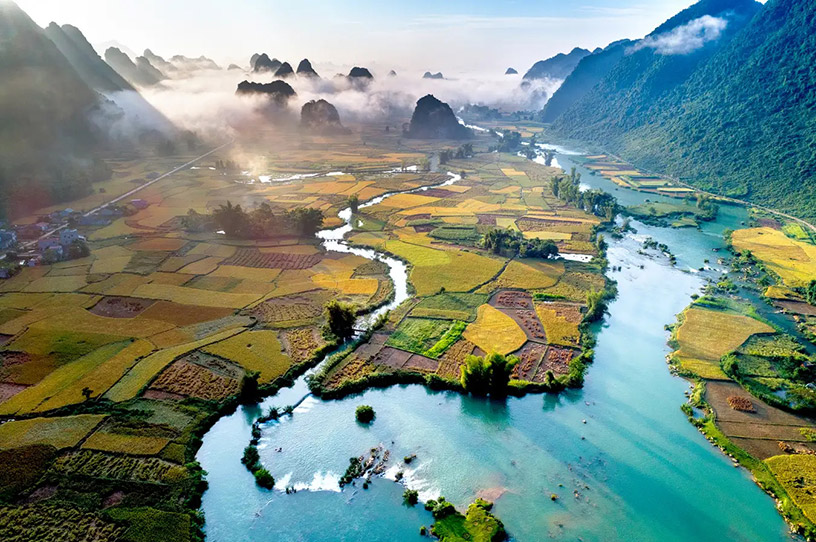
Best Time to Visit Cao Bang
Cao Bang experiences all four seasons like most provinces in Northern Vietnam, but the two seasons with the most distinct weather are summer and winter. Summer in Cao Bang has a hot and humid climate, with temperatures ranging from 28-35°C and frequent rainfall. On the other hand, winter is relatively cold, with average temperatures ranging from 6-16°C and occasional drizzle or fog.
For convenient travel, it’s advisable to consider visiting Cao Bang during the dry season, which extends from October of the previous year to March of the following year. Avoid the rainy season, which starts in April and ends in September each year.
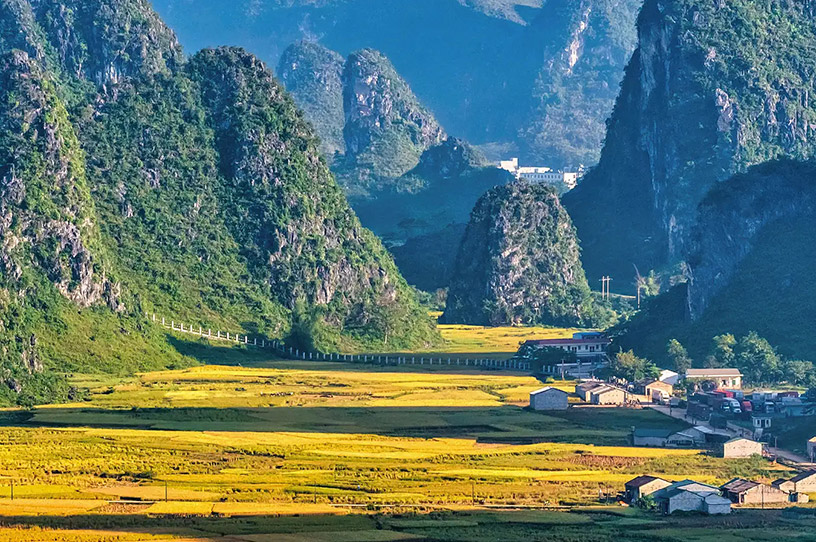
Transportation to Cao Bang
You can reach Cao Bang by car or motorcycle, with most travelers opting to journey from Hanoi to Cao Bang. The distance is approximately 280km, but the travel time exceeds 5 hours due to winding roads. If you prefer not to drive, you can rent a private car or take a bus from bus stations such as My Dinh Bus Station, Gia Lam Bus Station, with fares around 12 USD.
Top 9 Tourist Attractions in Cao Bang
Ban Gioc Waterfall
Among the most impressive destinations in Cao Bang, Ban Gioc Waterfall is consistently rated the highest by tourists. This location is part of the Cao Bang Global Geopark, recognized by UNESCO. Located approximately 100km from the center of Cao Bang and near the border with China, Ban Gioc is one of the most beautiful waterfalls in Vietnam. It is also known as one of the largest natural waterfalls in Southeast Asia, with the main falls spanning about 100 meters wide, over 60 meters high, and the longest slope reaching up to 30 meters. Visitors to Ban Gioc can experience boat rides for sightseeing or kayaking on the crystal-clear waters of the Quay Son River.
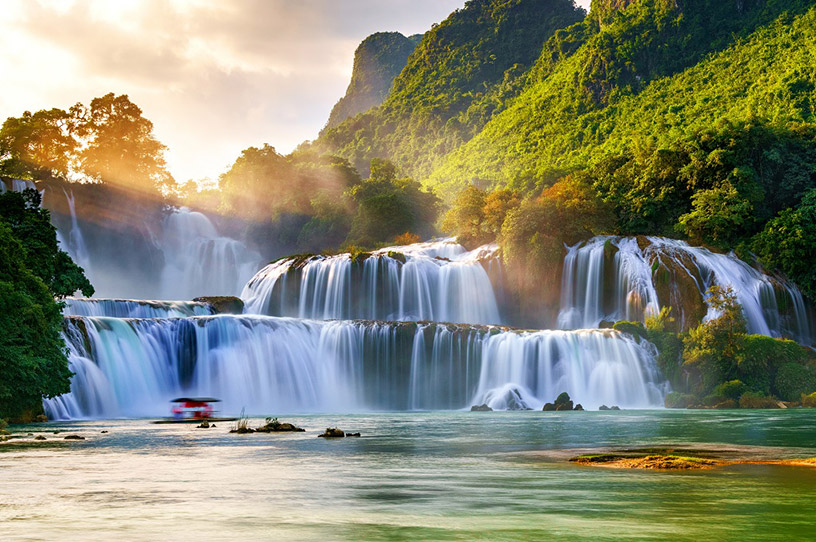
God’s Eye Mountain (or Thung Mountain)
God’s Eye Mountain, also known as Thung Mountain, is part of the Thang Hen 36 Lakes area and is another must-visit destination in Cao Bang. The name “Thung” originates from the mountain’s distinctive shape, featuring a circular hole near the summit with a diameter of up to 50 meters. Exploring the area around the mountain, you will encounter the daily life of Tay ethnic minority families, with unique stilt houses and stone fences as characteristic features of the local architecture. If you visit Cao Bang in September, you also have the opportunity to admire the golden ripe rice fields, creating a picturesque landscape.
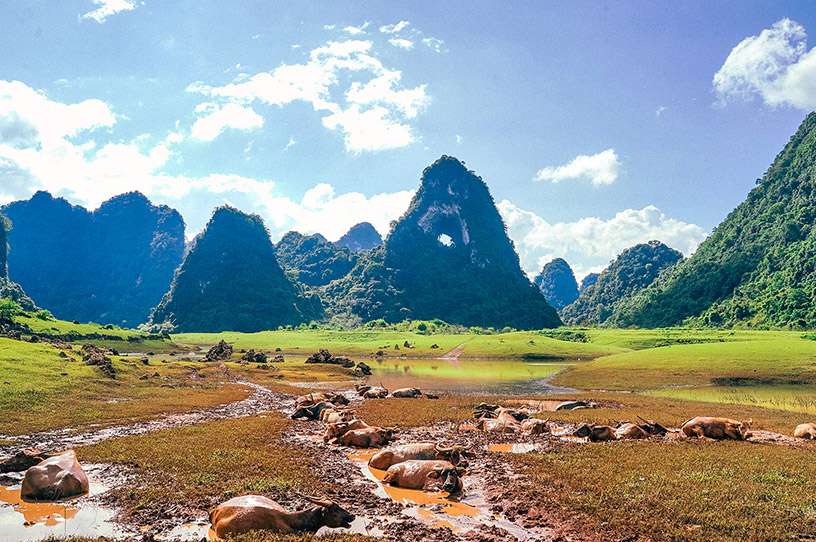
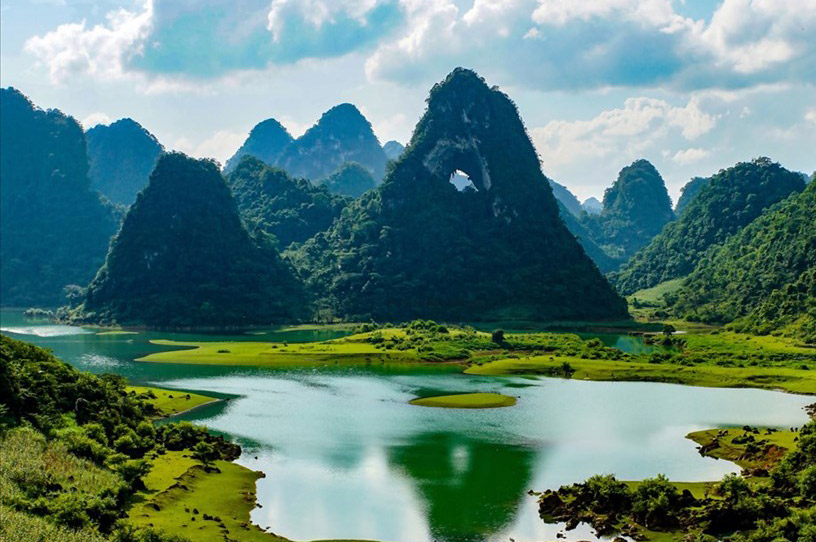
Ma Phuc Pass
Ma Phuc Pass is another unmissable destination in Cao Bang, known as the most beautiful mountain pass with a total length of over 3.5km and an elevation of nearly 700m above sea level. It is considered one of the most challenging and dangerous mountain passes in the Northeastern mountainous region of Vietnam. Ma Phuc Pass has seven sloping levels with many winding curves, surrounded by towering mountain cliffs, making this stretch of road a thrilling challenge for adventure-loving travelers.
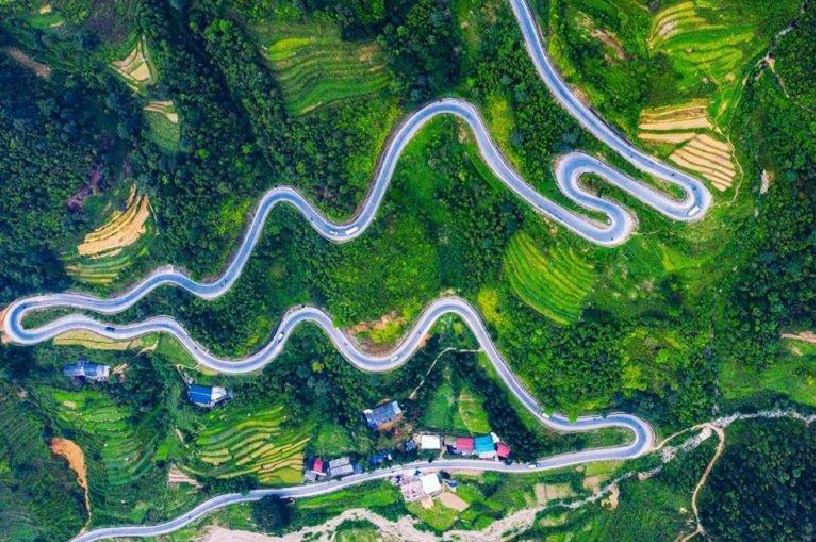
Nguom Ngao Cave
Nguom Ngao Cave, also known as Ngao Cave, was discovered in 1921 and opened for tourism in 1996. This cave possesses a mysterious beauty with a geological history dating back approximately 300 million years. Nestled within a majestic mountain in Dam Thuy commune, Trung Khanh district, Cao Bang province, the expansive interior, flat pathways, and a stunning system of natural stalactites contribute to making Nguom Ngao Cave an attraction that tourists find hard to overlook when visiting Cao Bang.
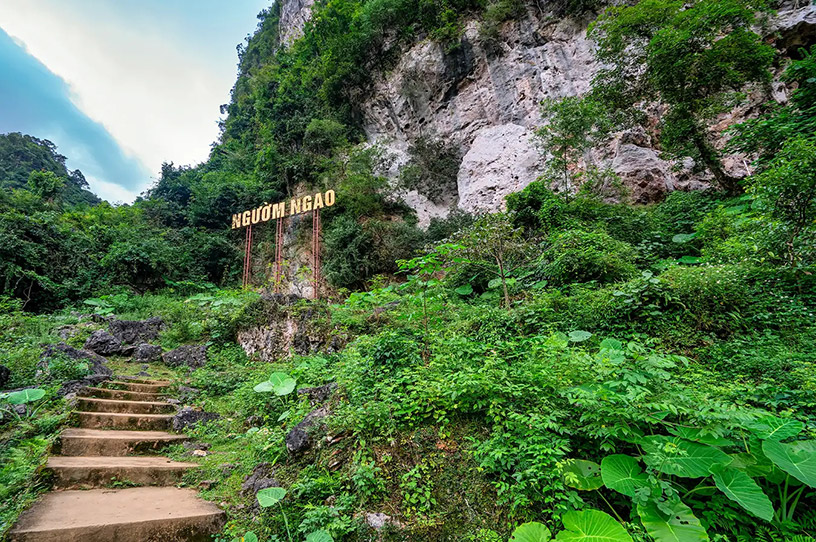
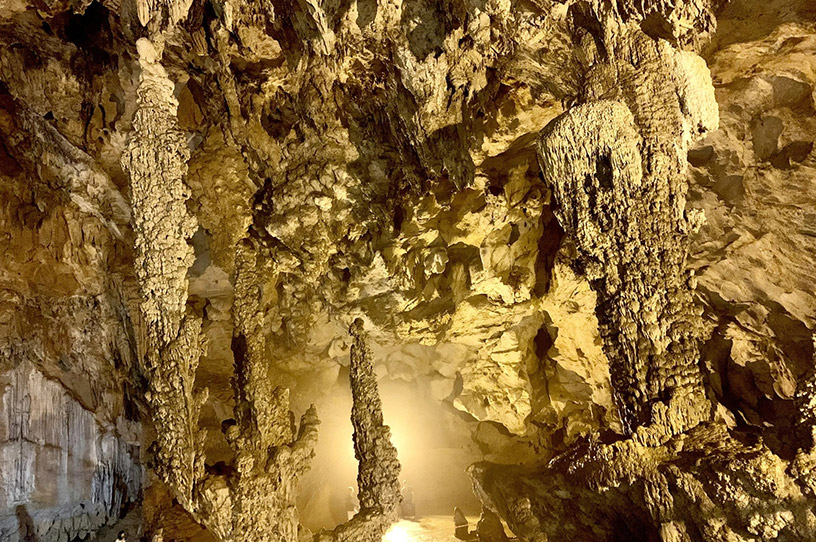
Thang Hen Lake
Thang Hen lake is a large natural freshwater lake located in Quoc Toan commune, Quang Hoa district, Cao Bang province. The lake is fed by numerous rivers and underground streams. Here, you can enjoy boating on the lake, marvel at the crystal-clear water, and immerse yourself in the stunning natural scenery that surrounds the area.

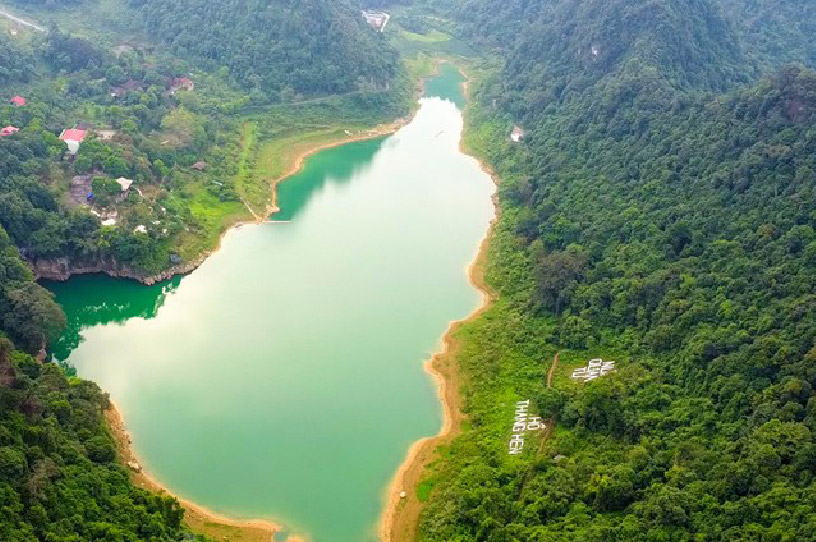
Pac Bo – Lenin Stream Historical Site
The historical site complex of Pac Bo is located in Truong Ha commune, Ha Quang district, Cao Bang province. This is a place closely associated with important historical events of the Vietnamese people during the resistance against the United States and against France. It is also the location where Uncle Ho (President Ho Chi Minh) lived and worked during the wartime of the nation.
In addition to exploring historical sites, Pac Bo in Cao Bang is also famous for its enchanting waterfalls, crystal-clear streams, vast primeval forests, treacherous rocky mountains, and vibrant fields in the fertile valley. Here, you can visit historical landmarks such as Le Nin stream, Cac Mac Mountain, Ho Chi Minh memorial monument, and Pac Po cave.
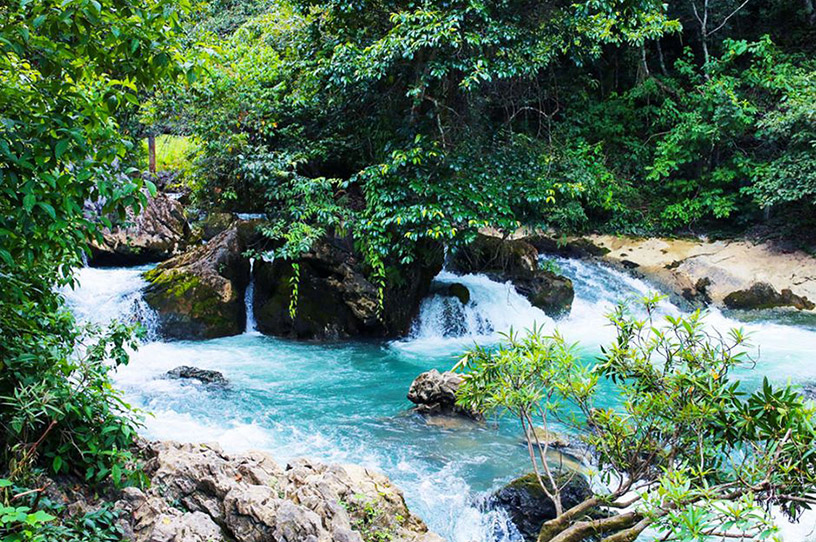
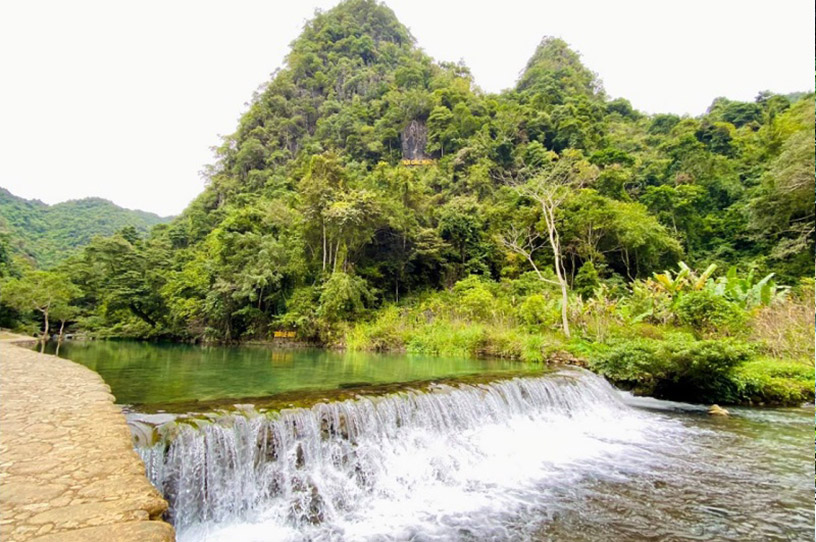
Me Pia Pass
If Ma Phuc Pass is the beautiful and treacherous mountain pass in Cao Bang, then Me Pia Pass is the most winding and dangerous route, with a length of 2.5km and 14 turns. When viewed from above, Me Pia Pass looks like a giant snake crawling up the mountain. This pass has been closely connected with the local people for a long time. In the past, it was only about 40cm wide, with steep and challenging mountainous terrain. In 2009, Me Pia Pass was constructed and the road surface was expanded to 5m, with the construction process completed in 2011.
Although the road has been expanded, it doesn’t mean that everyone can easily conquer it. The road has many continuous sharp turns, making it quite dangerous. When conquering this 14-turn pass, you will feel like you are climbing a mountain in a different way, and it is equally adventurous. If you are driving a personal vehicle, you must go slowly and be careful at every section of the road and turn. Despite facing a bit of danger, when standing at the top of the pass and looking down, you will exclaim “awesome” because of its magnificent scenery.
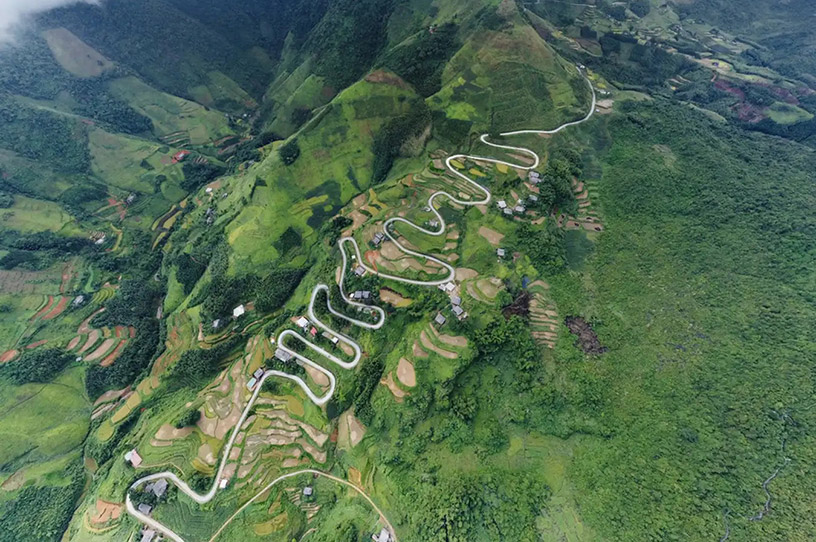
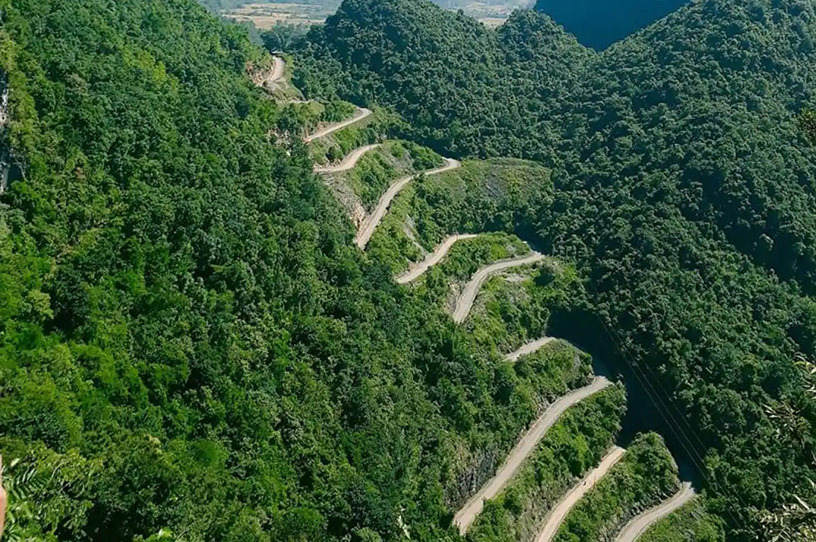
Khuoi Ky Ancient Stone Village in Cao Bang
Khuoi Ky Stone Village in Cao Bang is only about 3km from Ban Gioc Waterfall, so you can combine a visit to these two places. This is a 400-year-old ancient village, with only 14 households of Tay ethnic people living here. They live and engage in activities inside houses built from stone, constructed between 1594 and 1677. This characteristic may be due to the geographical location of the area having many limestone mountains, and stone is widely used in the daily life of the ethnic minority people here. Stone is used to build houses and is also used in other construction works such as fences, roads, and river embankments.
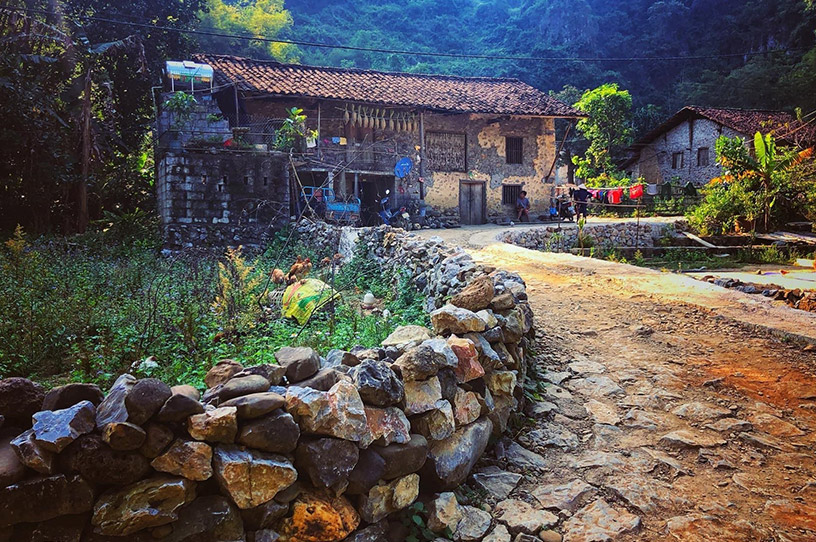
Quay Son River
Quay Son River originates from Guangxi Province, China, with two branches flowing into Vietnam. If you visit Ban Gioc Waterfall, you will see this river with its azure blue water. The winding river flows through various terrains, creating a very picturesque landscape. With this advantage, many tourism service establishments have been built to serve the resort needs of tourists, such as homestays of local people along the riverbank, kayaking services, and renting bicycles and canoes on the river to meet the sightseeing needs of tourists.
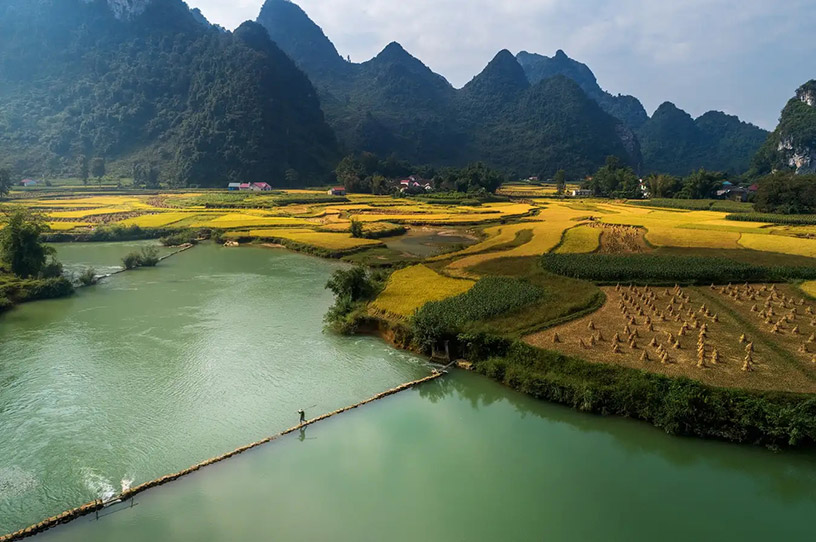
Cao Bang Cuisine
Cao Bang steamed rolled rice pancake
Cao Bang steamed rolled rice pancake is a locally famous dish that you shouldn’t miss. The outer layer of the cake is made of a thin, soft rice flour, while the inside is filled with meat, served with pork bone broth.
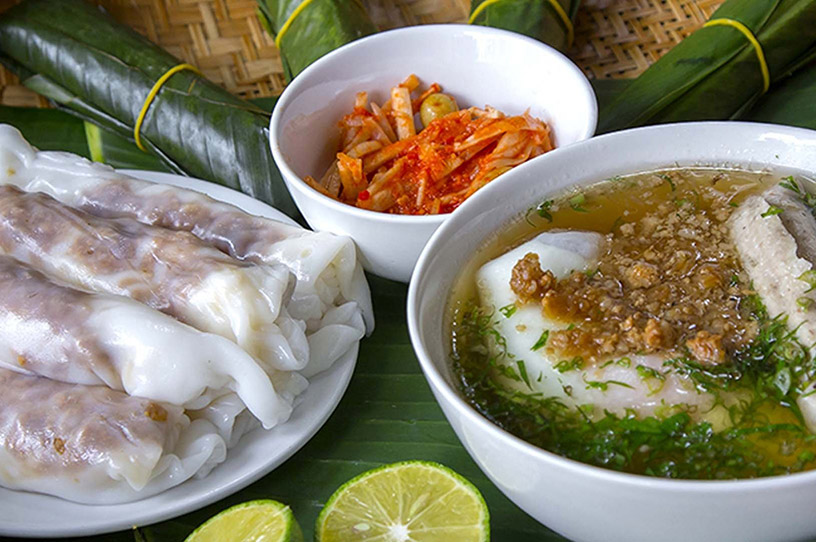
To learn more about Vietnamese spring rolls, see Top 7 Vietnamese Rolls You Should Try
Fried duck meat cake (Ap Chao Cake)
Fried duck meat cake is a famous cake in Cao Bang, resembling fried doughnuts on the outside with a filling made of duck meat inside. The cake’s crust is made from glutinous rice and ordinary rice, making it chewy and fragrant. After stuffing the filling into the crust, the cake is fried in boiling oil, flipped back and forth until both sides turn golden brown.
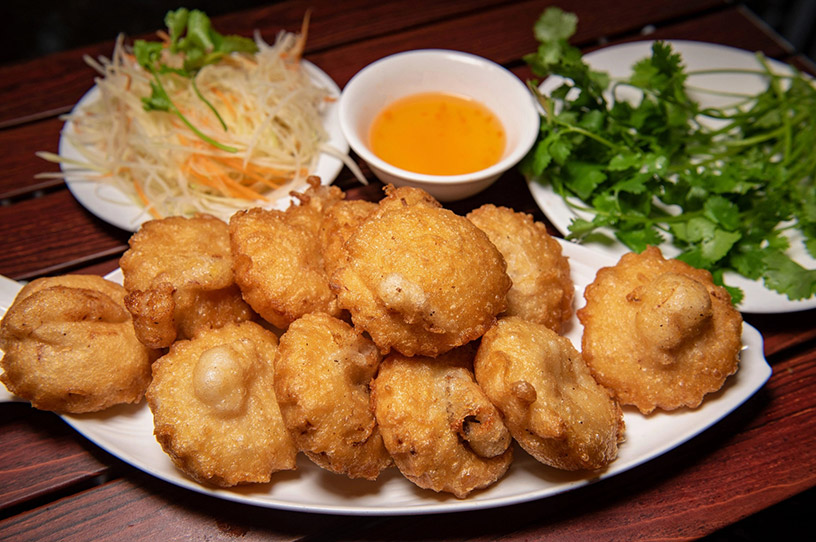
Notes When Visiting Cao Bang
- You should prepare suitable, lightweight clothing according to the season when traveling to Cao Bang. Especially bring warm clothes with good heat retention capabilities when visiting during winter, as temperatures can drop to as low as 3-4 degrees Celsius.
- Carry essential items such as raincoats, hats, maps, power banks, a small amount of medication, and insect repellent for unexpected situations.
- Ensure you have all necessary personal documents as Cao Bang is a border region adjacent to China.
- Since most roads in Cao Bang are mountainous, if you’re driving, you need to have a steady hand, equip yourself with full protective gear, and thoroughly check your vehicle to avoid breakdowns along the way.
Read more: 10 Things to Do When Traveling Abroad
Conclusion
Despite the challenging terrain and limited transportation options, where you can only travel by car or off-road motorcycle, Cao Bang remains a preferred destination for many travelers, especially those passionate about exploring new things and adventurous travel. With the information we’ve provided, we hope you have a successful and enjoyable trip to Cao Bang.


